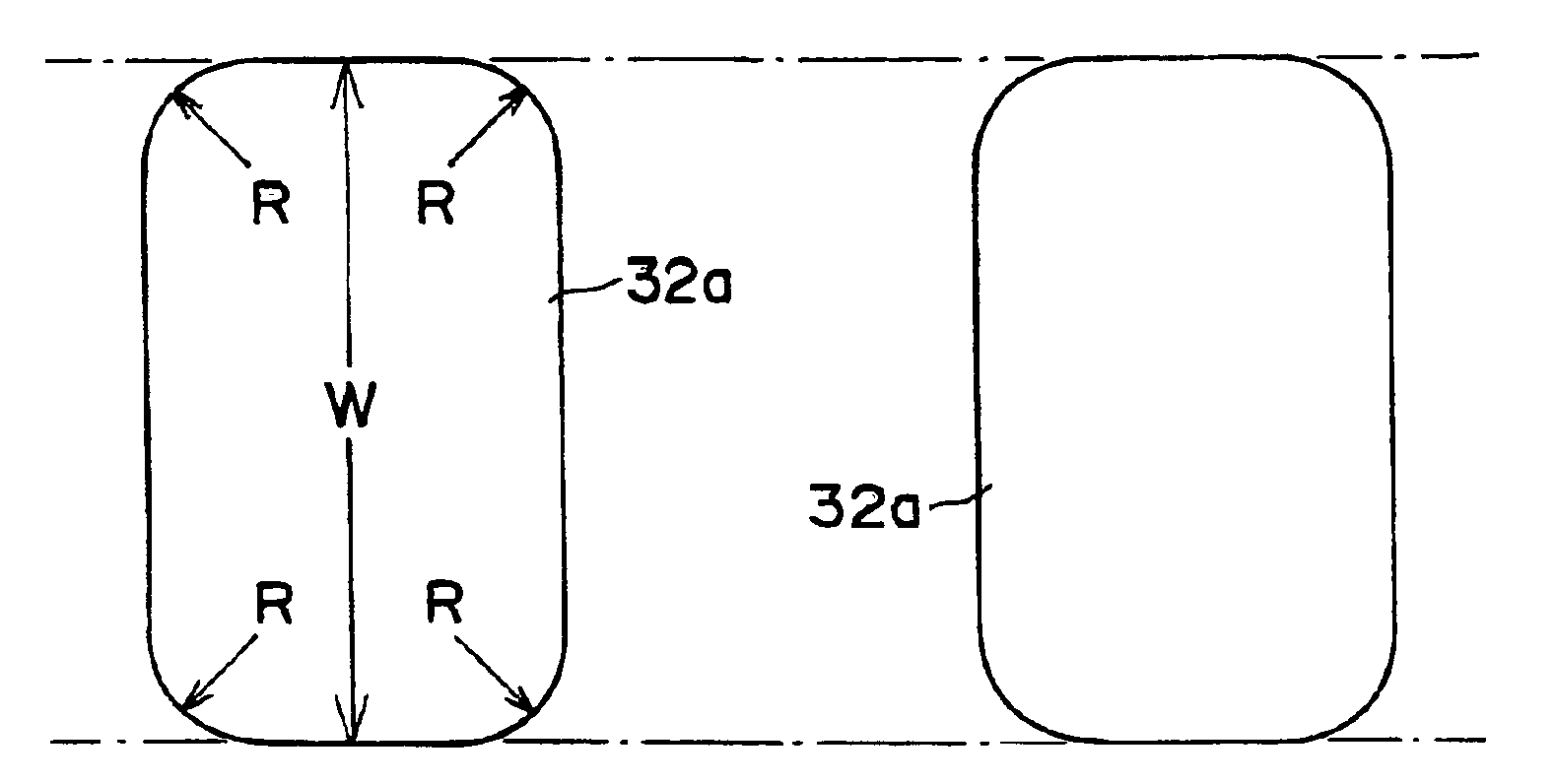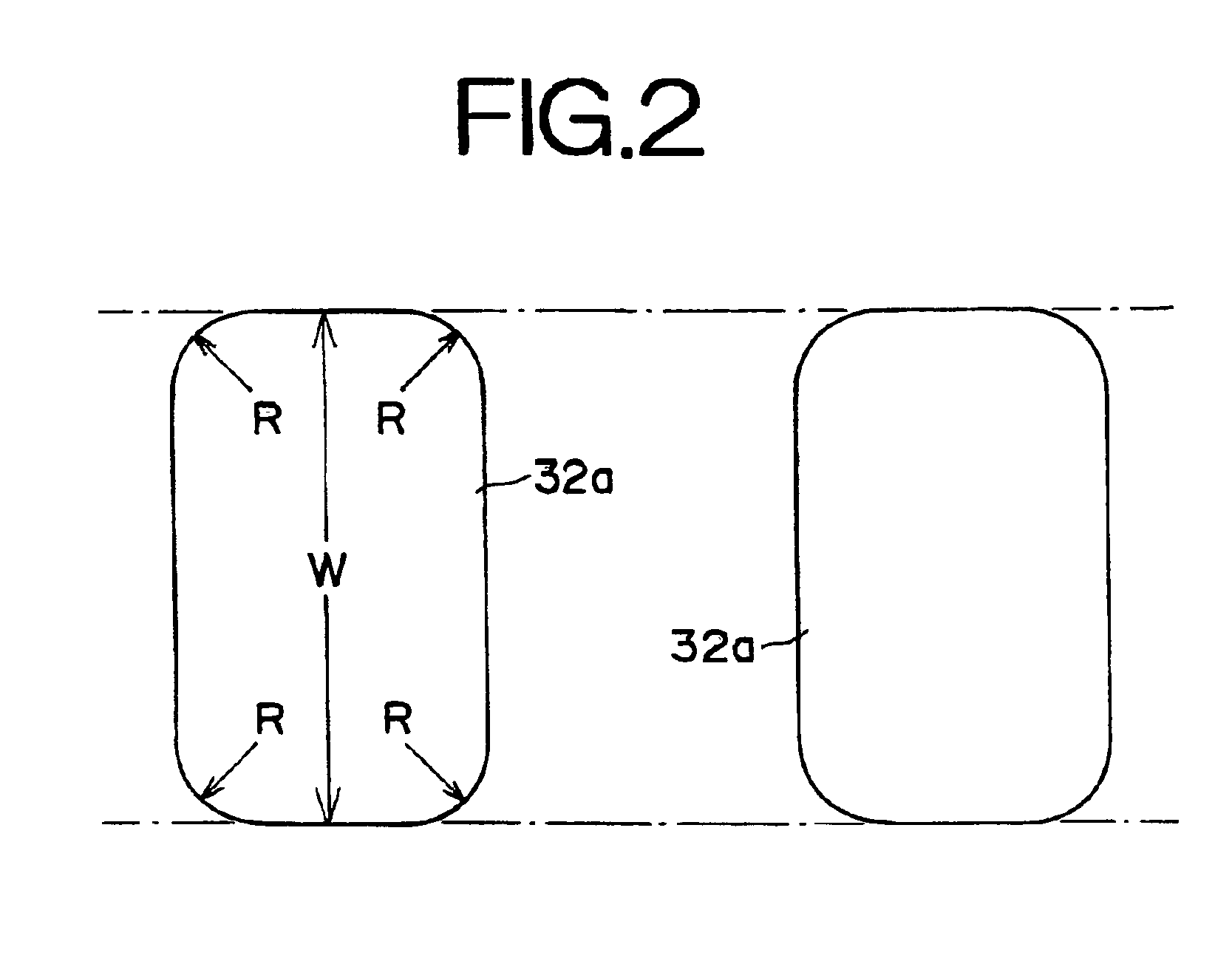Master carrier for magnetic transfer
a master carrier and magnetic transfer technology, applied in the direction of maintaining head carrier alignment, nanoinformatics, instruments, etc., can solve the problems of reducing reliability, signal quality, and non-magnetic transfer, so as to prevent the reduction of increase the recording loss, and improve the quality of the transferred signal
- Summary
- Abstract
- Description
- Claims
- Application Information
AI Technical Summary
Benefits of technology
Problems solved by technology
Method used
Image
Examples
first embodiment
[0067]Referring to FIGS. 1 and 2, there is shown a magnetic transfer method using a master carrier constructed according to the present invention. The magnetic transfer method uses in-plane recording, as shown in FIG. 1. Note in FIGS. 1 and 2 that the dimensions of each part are shown at a ratio differing from the actual dimensions.
[0068]The magnetic transfer method using in-plane recording will be outlined. As shown in FIG. 1A, an initializing field Hin is first applied to a slave medium 2 in one direction along the direction of a data track on a disk to perform initial magnetization (DC demagnetization). Then, as shown in FIG. 1B, the slave surface (magnetic recording portion) of the slave medium 2, and the top surface of the land pattern 32a of an information carrying surface consisting of a soft magnetic layer 32 (magnetic material) coated on a microscope land / groove pattern on the substrate 31 of a master carrier 3, are brought physical contact with each other. In the state of ...
second embodiment
[0113]In the case of the second embodiment shown in FIG. 3, the reinforcement portions 41c are arranged on both sides of the land 41a of the substrate 41 and are formed into the shape of a narrow width protrusion so that they become coplanar with the land 41a. By the reinforcement portions 41c, the magnetic land layer 42a is buried in the groove region formed in the land 41a.
[0114]For the master carrier 40 mentioned above, the substrate 41 with a microscopic land / groove pattern consisting of lands 41a, grooves 41b, and reinforcement portions 41c is first generated as shown in FIG. 4A. The land / groove pattern with different depths can be formed, for example, by multistage exposure and etching. The substrate 41 can be generated by a master ring employing the land / groove pattern.
[0115]Next, as shown in FIG. 4B, the magnetic layer 42 is formed on the substrate 41 to a predetermined thickness with a soft magnetic material by vacuum film forming means such as vacuum evaporation, sputteri...
third embodiment
[0124]A magnetic transfer method according to the present invention will hereinafter be described in detail. Initially, a description will be given of a master carrier, which is employed for magnetic transfer, and a magnetic recording medium, which is a slave medium to which predetermined information is transferred magnetically from the master carrier.
[0125]FIG. 6 shows the cross section of a magnetic recording medium 51 and a master carrier 54. The magnetic recording medium 51 is a magnetic disk for longitudinal recording and has a magnetic layer (recording-reproducing layer) 53 on a base 52. In FIG. 6, the recording-reproducing layer 53 is provided on only one side of the base 52. However, recording-reproducing layers may be provided on both sides of the base 52, respectively. Note that the base 52 may be a hard substrate or flexible substrate.
[0126]The master carrier 54 is formed into a disk shape and equipped with a substrate 55 and a soft magnetic layer 56. The surface of the s...
PUM
| Property | Measurement | Unit |
|---|---|---|
| coercive field | aaaaa | aaaaa |
| coercive field | aaaaa | aaaaa |
| width | aaaaa | aaaaa |
Abstract
Description
Claims
Application Information
 Login to View More
Login to View More - R&D
- Intellectual Property
- Life Sciences
- Materials
- Tech Scout
- Unparalleled Data Quality
- Higher Quality Content
- 60% Fewer Hallucinations
Browse by: Latest US Patents, China's latest patents, Technical Efficacy Thesaurus, Application Domain, Technology Topic, Popular Technical Reports.
© 2025 PatSnap. All rights reserved.Legal|Privacy policy|Modern Slavery Act Transparency Statement|Sitemap|About US| Contact US: help@patsnap.com



